
25 minute read
News from organisations affiliated to IGU
from IGU Magazine October 2016
by IGU
x The ‘North Sea Energy
Manifesto’. Left to Right: Mel Kroon (Tennet), Jo Peters (Nogepa), Paul de Krom (TNO), Tjerk Wagenaar (Natuur en Milieu) Hans Timmers (NWEA).
This issue we bring you a report from Energy Delta Institute (EDI) on the inaugural Gas meets Wind symposium, further highlighting the possibilities for the convergence of gas and renewables that was a feature of the last issue of International Gas, April-September 2016. We follow this with a preview of the Gas Technology Institute (GTI) conference, CH4 Connections, and they also provide an update on their work on the detection, prevention and mitigation of methane emissions. Pipeline Research Council International (PRCI) reflect on a busy year of growth and change and we conclude with an update on the World LPG Association’s flagship Cooking for Life campaign.
Gas meets Wind: The North Sea as a future powerhouse
By Miralda van Schot The North Sea is one of Europe’s prominent and promising areas. In the past, the countries surrounding the North Sea were at the heart of scientific, mercantile and artistic transformations
that formed the centre of the first truly global empires, as Michael Pye explains in The edge of the world. Similarly, just as the North Sea has taken an important role in shaping our modern world, it will also have a significant stake in the transition of our modern societies towards achieving the climate goals set by COP 21. The North Sea’s attractiveness as an offshore energy powerhouse, including offshore wind and (green) gas, is huge. And extensive integration between the gas and wind sector may offer a sustainable, reliable, affordable and safe energy system, in balance with improved ecosystems.
Cooperation between the offshore gas and wind sector formed a common thread during the Gas meets Wind symposium, initialised by a consortium of parties consisting of Energy Delta Institute (EDI), Energy Valley, TKI Gas, TKi Wind op Zee, Netherlands Wind Energy Association (NWEA) and Netherlands Oil and Gas Exploration and Production Association (Nogepa). These parties joined forces and organised, within the framework of the Dutch EU presidency, the first edition of this international high-profile symposium on offshore collaboration between the most important (energy-related) stakeholders.
The symposium highlighted that representatives from the gas and wind industry are willing to work together. EDI is very pleased that the above-mentioned representatives have joined forces in ratifying and sealing the ‘North Sea Energy Challenge Manifesto’ to realise synergies between operators in the North Sea area and to make the energy transition as sustainable and affordable as possible. Hans Timmers, President of the board of NWEA and Jo Peters, Secretary General of Nopega are convinced of the bene
fits joint efforts can yield. Therefore, they have formed a steering committee together with environmental organisation Stichting Natuur & Milieu, the grid operator Tennet and TNO to further investigate joint possibilities. The steering committee operates in close contact with the MVI-E Lab of the Dutch Topsector Energy in which many North Sea region stakeholders will participate, such as fishery, navigation, ports, nature and agriculture.
In its role as an international energy business school, EDI played not only a significant role in bringing the parties together, but prior to the symposium we also gave young professionals the chance to experience the international challenge of cooperation by means of the Serious Policy Game. The game was developed by the Dutch Ministry of Economic Affairs and used in their campaign that ultimately led to the political declaration on North Sea collaboration regarding the development of offshore wind energy. The game consists of six fictional coastal countries that serve to build windmills and interconnections with a specific budget, while keeping in mind the coverage of domestic demand in the period from now until 2050. While results between the groups differed, the main conclu
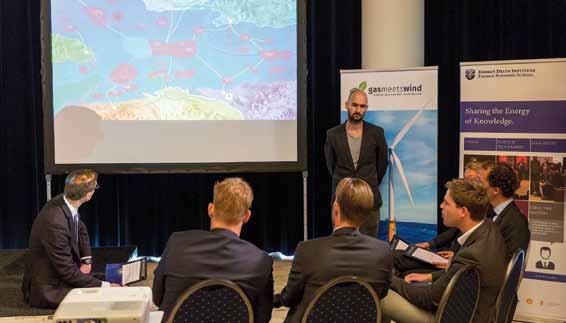
sion was that the energy transition in the North Sea accelerates in cases where a crossover of energy modalities and forces are bundled.
Later on, the symposium was kicked-off by the keynote speaker Mark Dierikx, DirectorGeneral Energy, Telecommunications and Competition at the Dutch Ministry of Economic Affairs, who gave insights into the political commitment of energy cooperation between North Sea countries. This political commitment was underlined with the ratification of the political declaration on June 6, 2016 stating the beginning of a coordinated approach by the North Sea countries in the field of offshore wind energy, which may ultimately lead to savings of up to €5.1 billion for offshore grid development. Now that a political framework for cooperation in the North Sea region has been laid out, Mark Dierikx was pleased to see that the industry wants to undertake action as well. “We have put regional cooperation high on the political agenda. I therefore welcome the bottom up approach and the initiative of the offshore gas, wind and grid operators, as cooperation of the fossil and renewable world will strengthen the energy transition and create a win-win for all.”
c Young Energy
Professionals negotiating a deal with the ‘Colours of the Wind’ Commission.
During two plenary round-table sessions, key stakeholders of the North Sea discussed the long-term vision for cooperation and the shortterm call for actions by focusing on tangible joint options, in which offshore wind, gas and grid operators can work together. René Peters from research institute TNO said: “A year ago, the gas and wind industry were not considering integration, now they are talking about synergies. We are witnessing a paradigm shift and we need to find out how one can benefit from another and develop new systems.”
Meanwhile, to make this transition by integration possible and affordable, offshore wind and gas operators should start collaborating. In the short term, this means that the possibilities of coordination in the conversion, storage and transport of energy have to be explored. Managing director of Engie, Ruud Bos, stated that the technology is there, but that the industry needs a pilot project and to use existing infrastructure, before it disappears.
New two-day seminar: The North Sea as a future powerhouse
As a result of the successful symposium and EDI’s research regarding offshore power-to-gas, EDI is introducing a two-day seminar: ‘North Sea as a future powerhouse’. This seminar is designed with the aim to build bridges between the fossil-energy industry and the offshore-wind sector. In this way, gas and renewables will become wider connected with regard to exchange, storage and transport of energy, which can lead to new initiatives to promote cooperation of gas and wind on the North Sea. The seminar is expected to take place in five cities along the North Sea, starting in winter 2016 until summer 2017. For more information, please follow developments on EDI’s website (www.energydelta.org).
Miralda van Schot is a scientific energy analyst at Energy Delta Institute.
GTI answers the call for action on methane emissions reductions
By Diane Miller As the demand to mitigate and adapt to climate change has taken centre stage, methane emissions are one of the most discussed issues facing the gas industry today. The US Environmental Protection Agency has proposed regulations for cutting methane emissions from the oil and gas sector by 40%, and communities around the globe need innovative solutions to meet the challenges of a post-COP 21 world.
Balanced perspectives and collaboration at the heart of CH4 Connections conference
GTI’s annual CH4 Connections conference offers a collaborative approach, focusing on the solutions needed to mitigate the impact of methane emissions while providing the public with requisite energy and services. All the leading research experts, policymakers and environmental advocates will come together to discuss what’s new and what’s next in this important environmental area.
Researchers around the world have developed cutting-edge techniques for emissions measurement; gas utilities have implemented new leak detection and prevention strategies; and state regulators have enacted measures to encourage further improvement. CH4 Connections provides a forum for diverse interests to share knowledge and experience

v Using a Hi Flow
Sampler it is possible to rapidly and accurately measure methane leaks from a variety of gas industry equipment.

as they discuss upcoming policy decisions and the newest detection, measurement, and reduction programmes and techniques.
New location at centre of game-changing methane decision-making
The 2016 event takes place from November 2-3, 2016 in Washington DC, where speakers will address current research on methane leakage, technologies to detect and reduce emissions, policy and regulatory options, and business implications and opportunities. Two days of peer-reviewed environmental sessions will feature round-table discussion panels and dynamic keynote addresses.
Expert viewpoints
Tisha Shuller, an energy policy thought leader specialising in oil and gas, will be just one of the featured keynote speakers at the event. She works as Strategic Advisor to Stanford University’s Natural Gas Initiative, and speaks around the world on the contentious issues associated with energy development. In addition, Sarah Dunham, the Director of the Environmental Protection Agency’s (EPA) Office of Atmospheric Programs, will join the line-up as another compelling keynote.
Speakers from the Department of Energy (DOE), Environmental Defense Fund (EDF), New York State Public Service Commission (NYPSC), utilities, universities, national labs and others will share their insights along with presentations from the American Gas Association (AGA) and a panel discussion highlighting international perspectives. You can learn more about the detailed agenda at www.gastechnology.org/CH4.
Past CH4 Connections conferences hosted in The Woodlands, Texas in 2014 and 2015 have received very favourable responses from participants. They featured leading experts interacting with attendees from industry, environmental and government organisations in lively discussion exploring methane emissions from a host of viewpoints.
Improving methane emissions estimates and quantification
Working closely with operators and industry stakeholders, GTI is concluding fieldwork collecting and analysing leak data for buried pipes at a host of sites in the US. This highquality data will improve estimates for activity data and promote the acceptance of new methane emissions quantification methods for compliance with EPA reporting requirements and other regulations under development.
Building on the collaborative approach emphasised in the CH4 Connections conference, GTI is addressing environmental concerns in close partnership with industry, government, researchers, and academia. GTI has engaged with the AGA, EDF and National Institute of Standards and Technology (NIST), seeking their input and review of the data and approaches used to quantify methane emissions.
Tools and technologies for detection, prevention and mitigation
In the early 2000s, GTI supported development of an innovative portable tool called the Hi Flow Sampler that can rapidly and accurately measure methane leaks – fugitive emissions – from a variety of gas industry equipment. The tool, commercially available from Heath Consultants, is now being used to provide real-time measurements of gas-flow rates and concentrations in a captured enclosure at the surface.
The Portable Methane Detector (PMD), developed by GTI and available from SENSIT Technologies, improves the efficiency of walking leak surveys. Using optical-detection technology, the handheld PMD device offers sensitivity and cost advantages over conventional techniques employing flame ionisation detectors.
A tool that can accurately quantify emissions in the field and provide data for emissions reporting is under development. GTI researchers are also evaluating the use of alternative technologies, such as optical gas imaging cameras, to detect and quantify leaks throughout the natural gas system.
Under a newly awarded $1.2 million DOE contract, GTI and Jet Propulsion Laboratory will develop and test a high-efficiency integrated Methane Mitigation Thermoelectric Generator (MMTEG)/burner system in a field pilot for oil and gas field operations. In another new DOE contract, GTI and RTI International will serve as subcontractors to PPG Industries to develop and demonstrate a system to provide remote monitoring of natural gas pipeline conditions and early detection of factors leading to a potential for unintended methane release.
Assessments, methodologies and projects
In a California Energy Commission-sponsored project, fugitive emissions from natural gas systems in commercial buildings are being assessed. GTI is developing a methodology for measuring emissions beyond the meter from specific appliances or system components, to help quantify total building emissions. These efforts will help give a holistic picture of the total leakage from natural gas activities in California.
GTI recently completed a project to quantify methane emissions from distribution pipelines in California for the California Air Resources Board and presented results at a joint California Public Utilities Commission/California Energy Commission/California Air Resources Board methane emissions symposium. State-specific emission factors based on pipe material were developed and utilised to estimate methane emissions at the state level.
The next phase of work will focus on methane emissions from residential customer meters. These studies will provide important information on natural gas leaks from local distribution companies and improve methane emission estimates from this sector.
GTI and team also recently received a $1.1 million DOE contract award to conduct field campaigns to measure methane emissions from new and vintage plastic, plastic-lined steel, and cast-iron pipes, as well as from industrial meters.

Improving safety with proactive detection
GTI’s residential methane detector programme focuses on augmenting natural gas safety programmes with early warning systems. A national pilot study to evaluate the performance of methane detectors in residential settings began in April 2016, with 10 utilities deploying about 700 detectors in customers’ homes.
The commercially available detectors being tested performed well under extensive lab testing at GTI, demonstrating their ability to detect natural gas at 10% of the lower explosive limit and illustrating an improved ability to discern between standard household chemicals and natural gas, reducing the likelihood of false positives.
The pilot programme will run approximately 12 months to validate device performance in a
z The Portable Methane
Detector, developed by GTI, improves the efficiency sensitivity and cost-effectiveness of walking leak surveys.
v The Center’s pull test
facility has three parallel pipe strings with diameters of 12-, 16-, and 24-inches.
real-world environment and provide statistical rigour in quantifying performance to provide data for informed decision-making on broader deployment strategies.
In parallel, a consumer behaviour study and revision to applicable UL standards for a lower level of detection are underway. By improving the reliability and increasing the use of residential methane detectors to a point where they are a common household item similar to smoke alarms and carbon monoxide detectors, issues due to unreported or undetected gas leaks can be prevented.
Diane Miller is Senior Marketing Communications Manager at the Gas Technology Institute.
PRCI Technology Development Center and Research Objectives
By Cliff Johnson I remember when I was young and a year seemed to last forever, at the least the school year did. Summertime seemed to flash by before you knew it. Now it seems like life is one quick and eventful summer and that is particularly true for Pipeline Research Council International (PRCI). It has been an amazing year of growth and change at PRCI.
Just last year we opened the new PRCI Technology Development Center (TDC). This is a 3.4-hectare site featuring a 2,787m² research and development centre for PRCI, its members, and the industry. As part of the site we house a pull test facility that currently has three parallel pipe strings with diameters of 12-, 16-, and 24-inch pipes and lengths up to 500 feet. What is unique about these strings is the high density and verity of defects types, both real-world and manufactured, combined with a tool pulling capability that is unmatched in North America.
We have begun utilising the strings to work with our members, including inline inspection (ILI) tool vendors, to enhance the performance of the key tools for ensuring the safety and integrity of pipeline infrastructure. This is a partnership between the operators and the tool providers that is vital to the long-term safe operation of pipeline systems. We have also had usage of the pull test facility by our members and third parties to perform outside testing and validation of the tools. This is a
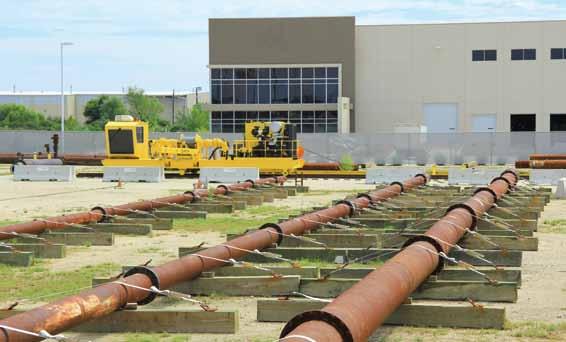
Humber pipeline contract awarded
A.Hak has been awarded a contract by National Grid to design and build the new Humber pipeline, together with joint venture partners Skanska and PORR Bau GmbH. This high pressure gas pipeline from Paull to Goxhill, within a tunnel underneath the River Humber, will replace the existing pipeline which lies on the riverbed.
Over time, the tidal patterns of the River Humber have eroded the river bed covering the existing pipeline, leading to parts of it being at risk of being exposed. An innovative shortterm engineering solution to protect the pipeline by covering exposed areas was put in place in 2010. Because of the importance of the pipeline, National Grid is now looking to construct a new pipeline in a tunnel underneath the river, as a long-term replacement.
Phil Croft, National Grid’s senior project manager said: “This pipeline will be the longest gas pipeline in a tunnel in the world, inserted in a single string. To do this we need partners with experience and a proven track record. A.Hak, Skanska and PORR were able to demonstrate their expertise and knowledge throughout the tender process, giving us the confidence that they were the right partners to build this tunnel and pipeline in such an environmentally sensitive and commercially busy river.”
On behalf of the joint venture, Colin Nicol, Operations Director, Skanska said: “We are delighted to be awarded this contract. The joint venture was formed to bring together international expertise to deliver, in an innovative, sustainable and collaborative way, a tunnel that will protect the pipeline for the long term.”
The three year project is estimated to cost around £150 million, in which the joint venture will provide full design and construction of the 5km tunnel, inserting a single string of 42” steel pipe and connect into the above ground installations at Paull and Goxhill.
The River Humber pipeline is part of the national transmission system of the United Kingdom – connecting the import terminal at Easington, on the East Yorkshire coast, to the wider network and delivering gas to millions of customers throughout the UK.
Getting the job done DUTCH QUALITY EVERYWHERE


v The first of three pipe
flow loops planned for the Center entered service this year, enabling both subsea pipeline and enhanced leak detection research to be undertaken.

great opportunity for our members, pipeline operators, and ILI tool providers to use the site to develop and enhance the needed tools for pipeline integrity.
Another key aspect of the TDC is the pipe sample inventory. In the past year, the inventory has grown from about 600 samples to over 1,100 samples, many with real world samples. The real world defects are a key part of the TDC and enable non-destructive testing on samples with both simple and complicated interacting threats. The initial focus of the pull test facility was natural gas pipeline systems, however, by mid-year we added liquid capabilities to the set-up. We are now able to work with our members on the natural gas side and the liquids side to address the issues facing each.
Also in the last year, we have added a pipe
Pipe samples by defect type available at the PRCI Technology Development Center.
140
120
100
80
60
40
20
0
Dents
Stress corrosion cracking Internal metal loss External metal loss Other
flow loop to the TDC inventory. The first of three strings loops have been completed at the 6-inch diameter. We are working to complete the 8- and 10-inch loops by the second quarter of 2017. These new assets will enable PRCI to expand our research at the TDC to include subsea pipeline systems as well. We are also looking at the loops to provide PRCI with the opportunity to enhance our work in the leak detection area.
The TDC continues to grow and flourish based on our members needs and direction. The site gives PRCI an opportunity to move aggressively to pursue key developments and enhancements for our members and the industry.
In the last year, we have also defined the key research objectives (RO) for our members. The RO are the cornerstone of our research programme and will provide focus on the key items needed by our members. The following are the RO: ◆ Develop and/or validate technology and analytical processes that are capable of characterising pipeline material properties with sufficient accuracy for application in pipeline integrity assessments. ◆ Develop and enhance ILI technology to reliably detect, size and characterise indications that may be harmful to the integrity of the pipeline. ◆ Develop, evaluate and enhance non
v Indoor smoke from
solid fuels is the tenth leading cause of avoidable deaths worldwide and disproportionately affects women and children.
destructive evaluation (NDE) technologies and operator and data analyst performance to define the condition and assess the integrity of pipeline, facilities and associated infrastructure from outside or above the pipeline or facility. ◆ Improve the accuracy and application of fitness for service methodologies by reducing uncertainties. Define, understand and improve the key factors, including models that are involved in design, construction or integrity assessments of any component in systems covered by PRCI. ◆ Develop, demonstrate and validate repair systems, including those that can be deployed on in-service facilities. Determine the useful life and safe operating envelopes of such repair systems. ◆ Develop, demonstrate and validate intrusion monitoring and surveillance technologies to enhance detection of third-party activities, ground movement and interferences potentially affecting pipeline infrastructure. ◆ Reduce all releases, i.e. leaks and emissions, from all parts of hydrocarbon production, storage and transport infrastructure by
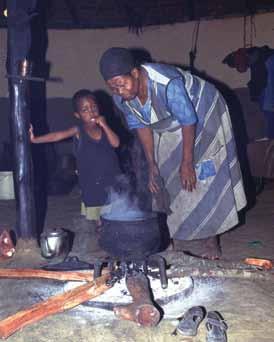
developing, demonstrating and validating processes and technologies to detect, locate, measure, quantify and mitigate such releases. ◆ Enhance operational efficiency, flexibility, and availability including measurement functionality 1 , accuracy, characterisation of flows and custody transfer at all points in production and delivery infrastructure including liquid pumping and gas compressor stations and all storage systems.
As we look back on the last year and prepare for 2017, it is amazing to see how much we have undertaken and how fast the year has gone. We know that time waits for no one and as we move into 2017, we know that it is shaping up to be another huge year for PRCI and our members. PRCI will continue to push to deliver relevant and innovative applied research for the safe operation of energy pipelines.
Cliff Johnson is President of Pipeline Research Council International.
Cooking for Life – A flagship campaign for the World LPG Association
By Alison Abbott Each year, 4.3 million people die from cookingrelated Household Air Pollution (HAP)-caused illness – more than deaths from malaria, HIV/ AIDS and tuberculosis combined.
Every morning in cities and rural areas across the world, a woman starts a fire to cook for her family using solid fuel. This daily ritual is meant to nurture and sustain families, instead it is harming them. Burning solid fuels releases soot into the air, causing respiratory infections, pulmonary disease, lung cancer, malnutrition, low birth weight and other conditions. Three billion people – largely the world’s most vulnerable and poor – breathe in this deadly air. Indoor smoke from solid fuels
1 Functionality includes proper operation reliability and repeatability of measurements.

z Cooking for Life aims
to transition one billion people from cooking with solid fuels to LPG by 2030.
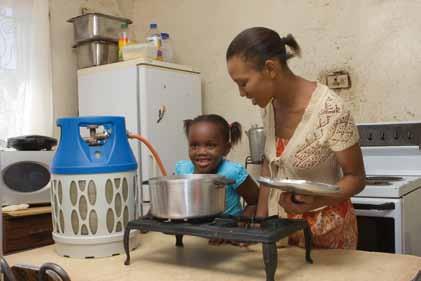
is the tenth leading cause of avoidable deaths worldwide. This is an entirely preventable problem which disproportionately affects women and children – the ones collecting, cooking with and breathing in solid fuels. The environmental impacts of cooking with solid fuels are also negative. Solid fuel collection and burning cause deforestation, desertification, pollution and soil erosion. The problem is focused in three main regions: East Asia, the Indian Sub-Continent and Sub-Saharan Africa. The socioeconomic cost is enormous: exposure to HAP from cooking this way causes the premature deaths of an estimated 4.3 million people annually from lung cancer, cardiovascular disease, pneumonia and chronic obstructive pulmonary disease, as well as illhealth and the loss of productivity among millions more. It also entails a waste of productive time and energy, as traditional fuels usually have to be collected and transported to the home and cooking with biomass is slow. The local and global environment may also be degraded, as the demand for biomass encourages deforestation, the use of animal waste degrades soil quality and, to the extent that it is used unsustainably, burning biomass contributes to global warming and to local and regional air pollution.
Cooking for Life was created by WLPGA and launched in 2012. Cooking for Life aims to transition one billion people from cooking with dirty and dangerous fuels such as various forms of biomass, dung and kerosene collectively known as ‘traditional fuels’ to cleaner burning LPG by 2030. In turn this will prevent some 500,000 premature deaths per year, primarily women and children from exposure to household air pollution. Quantitative studies of the socioeconomic impact of household energy interventions in developing countries carried out in recent years suggest that the socioeconomic gains from switching to LPG are significant and this shift will have the economic and social benefits of lifting millions out of the poverty trap to save lives, improve health, empower women and preserve the environment.
To achieve these ambitious targets, Cooking for Life mobilises support from a wide range of stakeholders, including the LPG industry itself, non-profit organisations and governments to create the policies and infrastructure needed to expand LPG use. The campaign convenes governments, public health officials, the energy industry and global NGOs to expand access to LPG and bring this modern alternative to the people who need it most. Cooking for Life also works to increase public awareness about how traditional fuels negatively affect everyday life among the world’s most vulnerable.
The specific goals of the campaign are to demonstrate the benefits of LPG to policymakers and opinion leaders in the context of development: health, economic advancement, women’s empowerment and education and the environment; to enable WLPGA member companies, policymakers, governments and development agencies to serve as channels to reach consumers about the benefits of LPG; to demonstrate the benefits of LPG as a cooking fuel to women, stressing the convenience, modernity and health benefits; and to promote the expansion of LPG demand and usage in
developing markets by working with governments and development agencies.
Cooking for Life puts the necessary tools and resources for success in the hands of energy policy decision-makers in developing countries. India, Brazil and Indonesia are shining examples of successful countrywide conversion to LPG, proving that large-scale adoption is possible. The campaign arms leaders in other countries with the best practices and lessons for implementing successful LPG conversion programmes.
The WLPGA has produced a wealth of reports looking at the impact of substituting LPG for traditional fuels on the lives of children, of women, the socioeconomic impact and also other issues such as deforestation. Two hundred and forty million households converting to LPG could save 23,700 km² of forest, in other words 46% of annual net global deforestation. A developing world household consumes two tonnes of wood per year which is the equivalent of approximately 10 trees. The shift by 2015 of 445 million people from wood to LPG would spare 4,4000 km² of forest a year. By 2030, with over a billion people switched to LPG, a staggering 12,000 km² per year would be saved which is equivalent to nearly onequarter of current global deforestation.
WLPGA has also produced an industry goodguidelines report which covered the conversion of institutional kitchens to LPG to be made available for schools, orphanages, hospitals, prisons and other establishments. The purpose of the guidelines was to provide materials to assist in convincing stakeholders to initiate the switch and to provide educators with a toolkit to explain the very distinct benefits of LPG.
In 2016, Cooking for Life is working with the UN High Commission on Refugees (UNHCR) to create a new WLPGA Good Industry Practices Guidelines on the safe use of LPG in humanitarian settings. This will be meant as a technical manual to be used by aid professionals for sourcing, storing, deploying, installing and using and maintaining LPG in a humanitarian
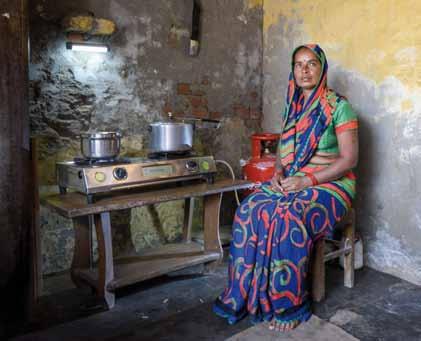
context such as refugee camps, emergency rapid response units, field hospitals and kitchens, etc. This takes into account the fact that today there are more people living in refugee camps than at any time since the end of World War II and that the average refugee spends 18 years in camps before being resettled permanently. Providing them with clean energy is of paramount importance.
Cooking for Life strongly supports other global initiatives such as the GiveItUp Campaign in India. GiveItUp is a scheme launched by the Indian government in 2015 that asks wealthy Indians to voluntarily give up their LPG subsidy so that less fortunate households that are truly in need may benefit. As of April 2016 over ten million Indian households had voluntarily given up their LPG subsidy so that less fortunate compatriots could benefit. A case study on this initiative can also be found on the Cooking for Life website.
All of the above reports are freely available for download at www.cooking-for-life.org or please contact Michael Kelly (mkelly@wlpga.org).
Alison Abbott is Communications Director at WLPGA.
z The GiveItUp campaign in India asks the wealthy to voluntarily forgo their LPG subsidy so the less fortunate may benefit.
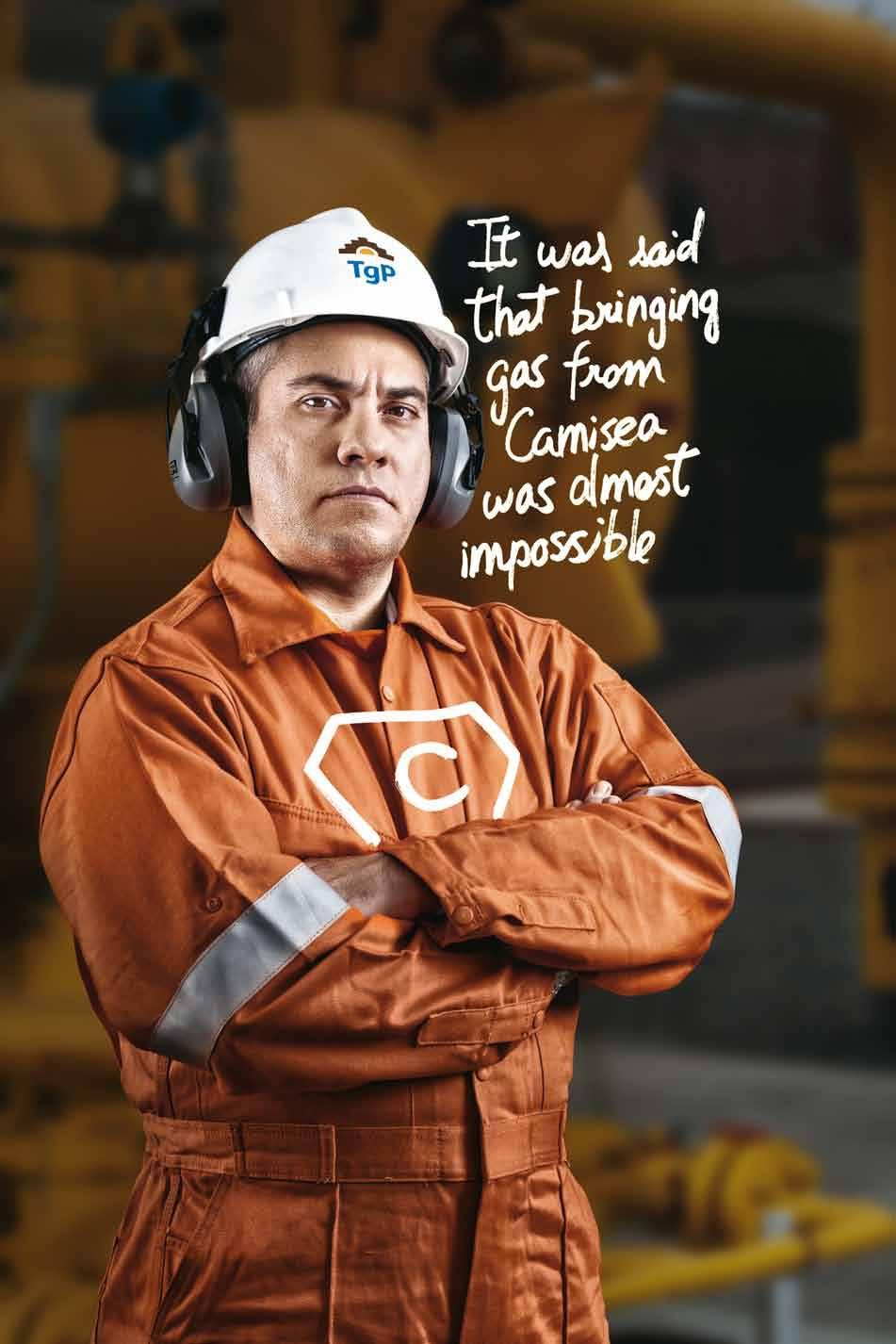
Focus on the work of IGU’s Committees and Task Forces
As the triennial work programme reaches its midpoint under the presidency of the United States we bring you some of the latest work produced by the IGU committees and task forces and their dedicated expert members.
Following an introduction highlighting recent changes in the Coordination Committee, some of the latest IGU publications that have been released and the 2016 IGU Human Capital Survey, we lead with an article about the Marketing and Communications committee’s ongoing and very well received Webcast Live… series of interviews and discussions.
The Utilisation committee share a paper on power generation in natural gas pressure reduction stations of compressor stations while the Strategy committee discusses gas price convergence in the last decade, its findings, from work undertaken in collaboration with the Energy Delta Institute, run contrary to conventional wisdom.
The final two articles in the section come from the Distribution committee, on elevating customer experience through customer feedback, and, on behalf of the R&D and Innovation committee, a paper on remote subsea pipeline repair technology jointly developed by Statoil and Gassco.










